
September is a wonderful time to plant apple trees because the cooler weather helps their roots grow strong. When choosing apple tree varieties, it’s important to think about your local climate and how much space you have. There are fun ways to plant apple trees, like using containers or shaping them against a wall (called espalier).
You can also think about planting flowers or other plants around your apple trees that help them grow better. Creating a beautiful garden design can make your space even more enjoyable. How can you set up your garden to make an amazing apple orchard this September? Discover creative ideas for planting apple trees and making the most of your garden space!
Are you ready to grow your own apple orchard this September? With the cool weather and fun planting ideas, it’s the perfect time to start. Consider your space and the right apple tree types, and watch your garden blossom!
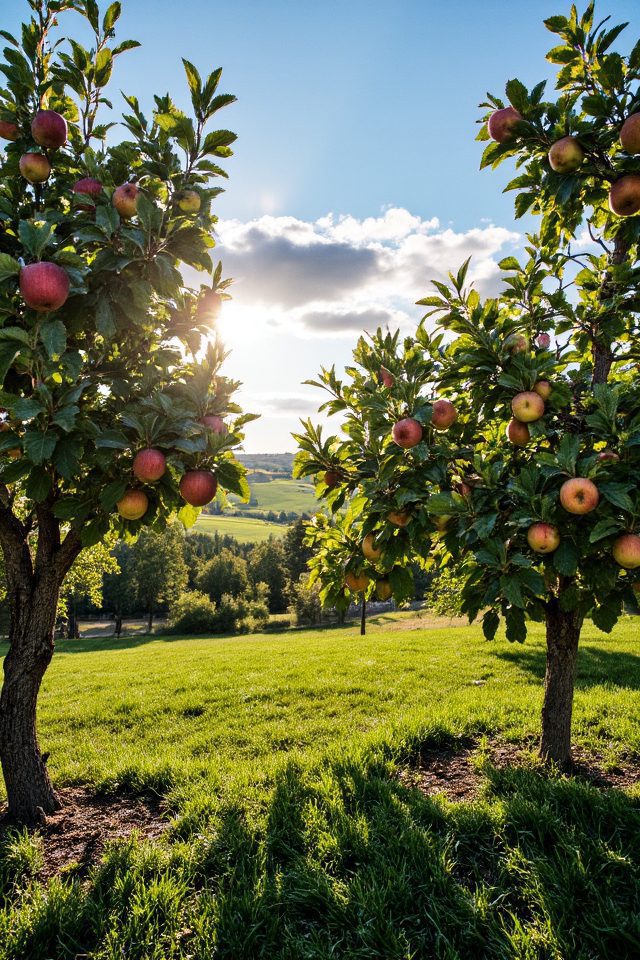
Selecting the right apple tree variety for your climate is essential for successful growth and fruit production.
Different apple varieties have unique temperature and chill hour requirements, making it vital to take into account your local climate.
For warmer regions, choose varieties like ‘Fuji’ or ‘Gala’ that thrive in heat, while cooler climates may favor ‘Honeycrisp’ or ‘Granny Smith’.
Additionally, understanding your soil type and specific microclimate will help in selecting the most suitable apple tree for ideal yields.
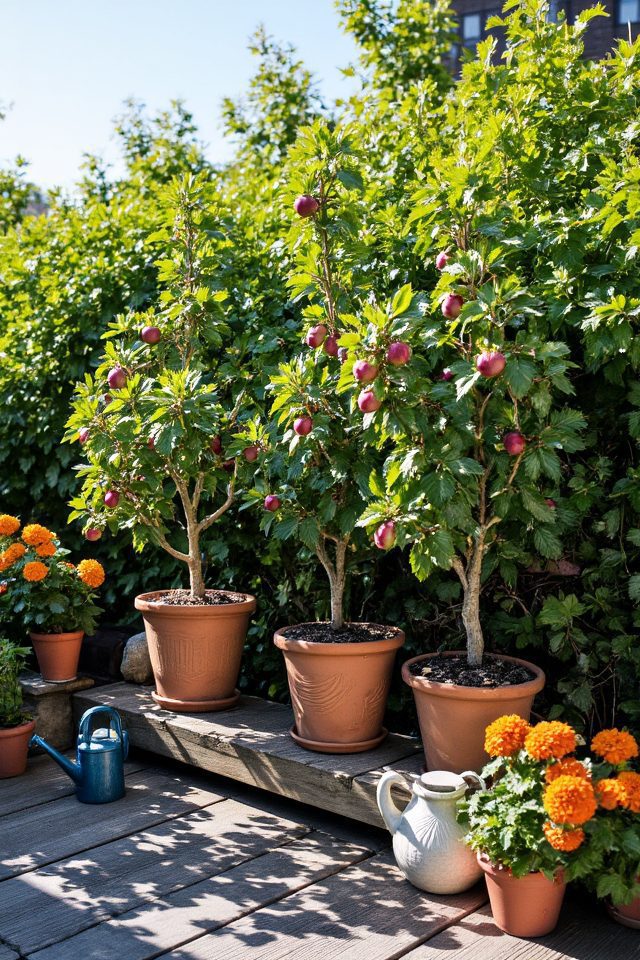
Container gardening with dwarf apple trees is an excellent way to enjoy the beauty and bounty of apple trees, even in limited spaces.
These compact varieties thrive in pots, allowing urban gardeners to cultivate fresh apples on balconies, patios, or small backyards.
With proper care, including full sunlight, adequate watering, and well-draining soil, dwarf apple trees can produce delicious fruit and make stunning ornamental additions to any outdoor space.
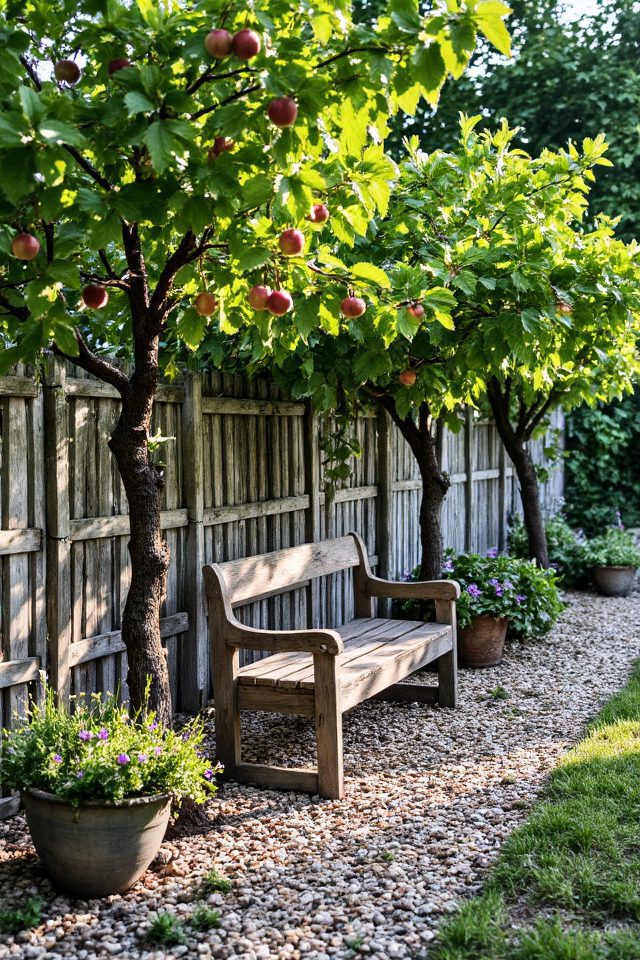
Espalier techniques are perfect for maximizing small spaces while creating a unique garden feature.
This method involves training apple trees to grow against a flat surface, such as a wall or trellis, by carefully pruning and attaching branches. This not only saves space but also promotes better sunlight exposure and air circulation, leading to healthier fruit production.
Espaliered apple trees can enhance your garden’s aesthetic, providing both beauty and functionality in compact areas.
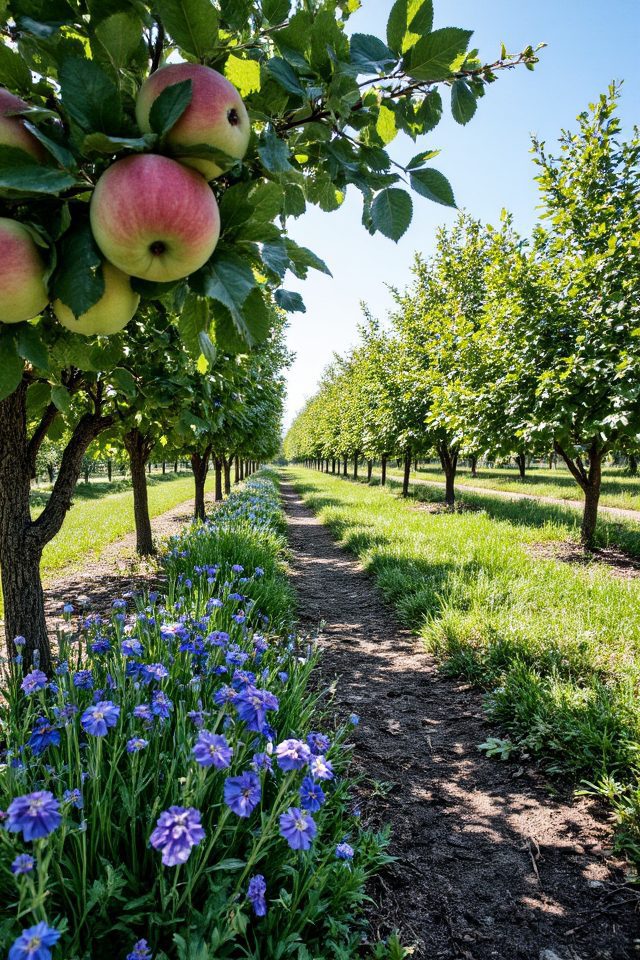
In order to guarantee a bountiful apple harvest, it’s important to take into account pollination partners when selecting companion plants for your apple trees.
These partners, such as flowering herbs (like chives and borage) and other fruit trees (such as crabapples or pears), attract bees and other pollinators, enhancing cross-pollination.
Additionally, companion plants can help deter pests, improve soil health, and provide shade, creating a harmonious ecosystem that encourages your apple trees to thrive.
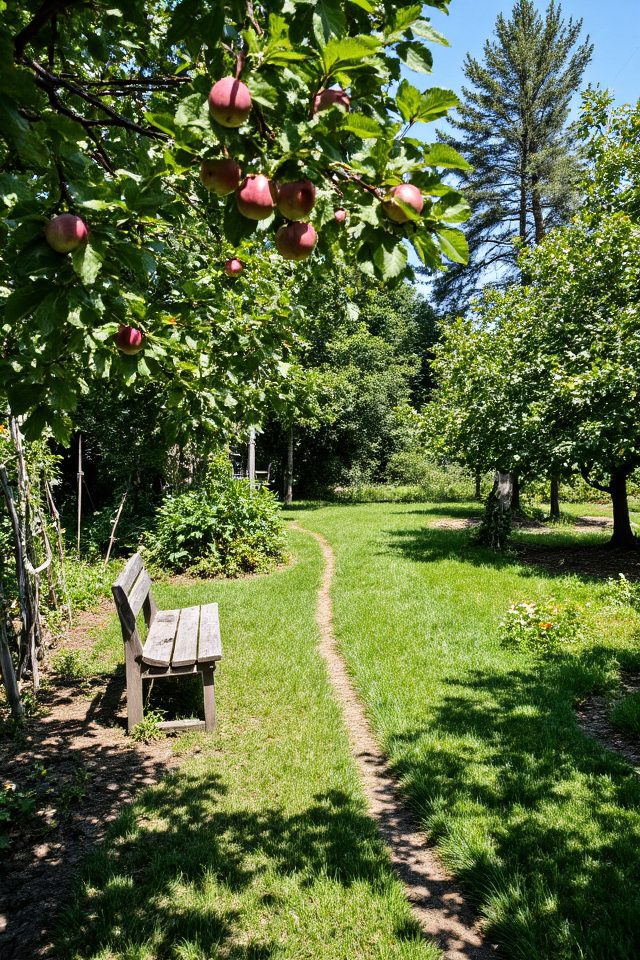
Creating an apple orchard in your backyard can be a rewarding and fruitful endeavor. Start by selecting a sunny spot with well-drained soil, ideally with space for at least a few varieties of apple trees to encourage cross-pollination.
Consider dwarf or semi-dwarf varieties for easier maintenance and harvesting. Incorporate companion plants, such as herbs, to deter pests and enhance the ecosystem.
With patience and care, your backyard orchard can provide delicious apples for years to come!
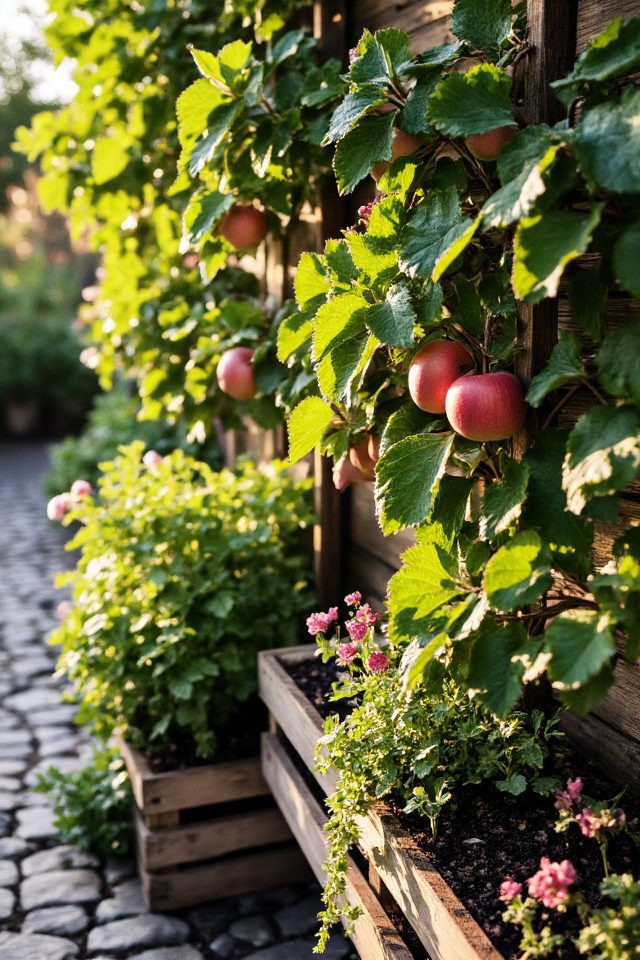
Vertical gardening is an innovative way to maximize space while incorporating apple trees into your garden.
By utilizing trellises, wall planters, or even vertical crates, you can grow apple trees in a more compact manner. This method not only saves ground space but also enhances sunlight exposure and airflow to the plants, promoting healthy growth.
With proper support and pruning techniques, dwarf or semi-dwarf apple varieties can thrive in vertical setups, providing fresh fruit in limited areas.
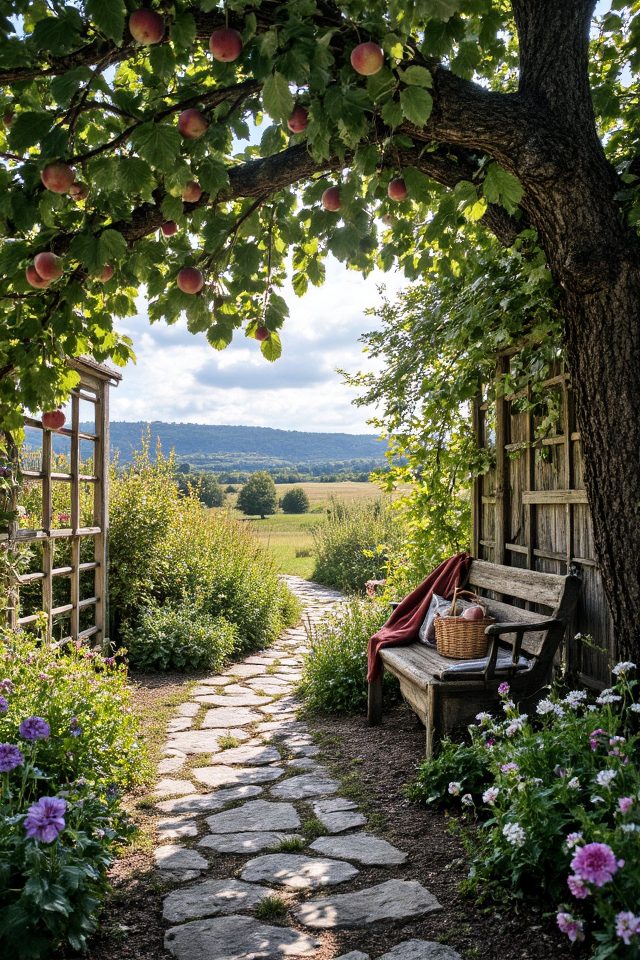
Designing a rustic apple tree garden invites a charming blend of nature and nostalgia.
Start by selecting heirloom apple tree varieties that evoke the past while adding visual interest with their varied colors and forms.
Incorporate winding paths made of natural stone or gravel, bordered by wildflowers and native plants to enhance the pastoral atmosphere.
Add rustic benches and trellises entwined with climbing vines for a cozy retreat, creating a serene spot to enjoy the beauty and bounty of your apple trees.
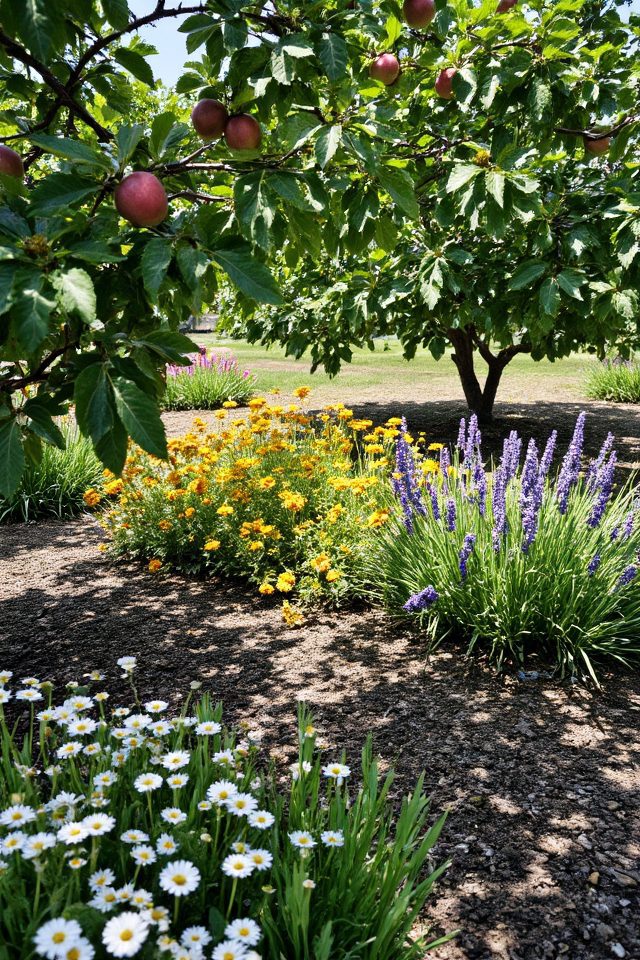
Mixing apple trees with perennial flowers creates a vibrant and enchanting garden that enhances both beauty and biodiversity.
Planting colorful perennials around apple trees not only adds visual interest but also supports pollinators, improving fruit yields.
Choose complementary flowers, such as lavender, salvia, or echinacea, that thrive in similar sunlight and soil conditions.
This harmonious blend creates a lush, layered look while providing essential habitats for beneficial insects, making your garden a lively ecosystem.
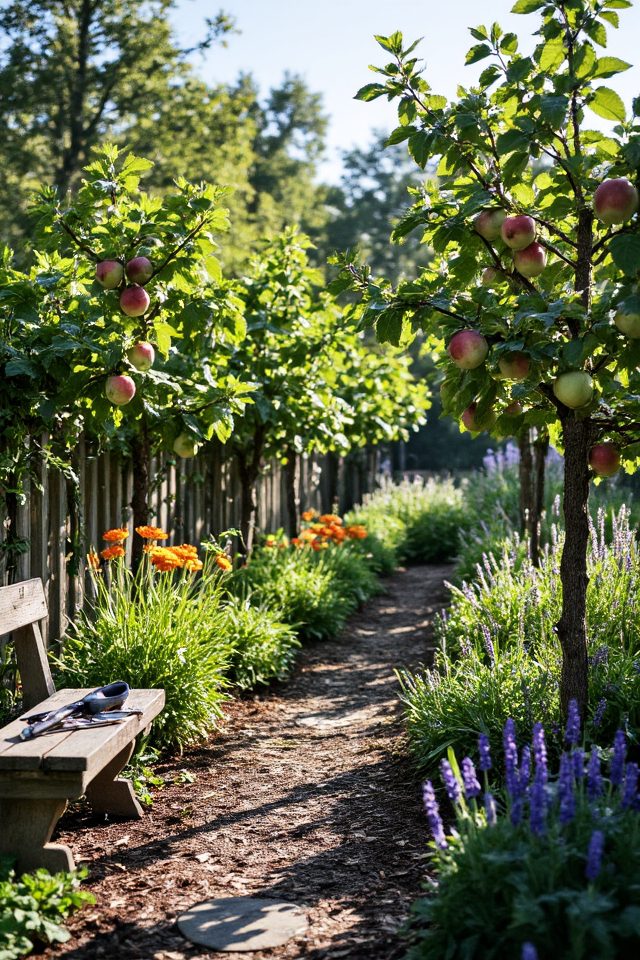
Incorporating apple trees into your edible landscaping not only enhances the aesthetic appeal of your garden but also provides a bountiful harvest.
Choose dwarf or semi-dwarf varieties to maximize space while ensuring easy access for maintenance and picking.
Plant them alongside companion plants like herbs and flowers to attract pollinators and deter pests.
Strategically placing apple trees in sunny, well-drained spots allows for ideal growth, making your landscape both beautiful and productive.
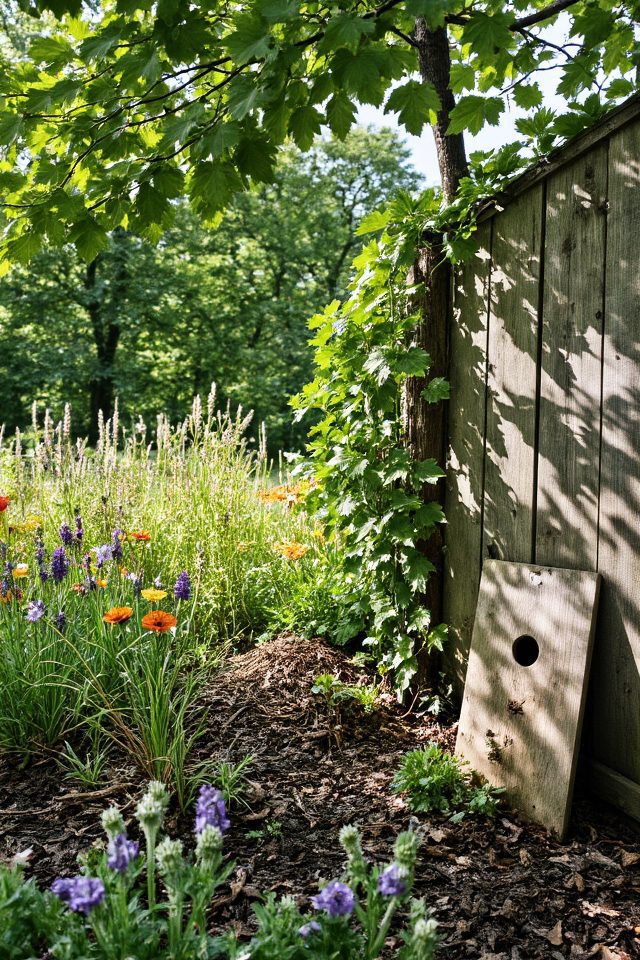
Creating a pollinator-friendly apple tree garden involves selecting a variety of flowering plants that attract bees, butterflies, and other beneficial insects.
Incorporate wildflowers, herbs, and native plants that bloom at different times throughout the growing season to guarantee a continuous food source.
Additionally, consider organic practices to maintain a healthy ecosystem, and avoid pesticides that could harm pollinators.
Providing nesting sites such as brush piles or bee hotels can further encourage these essential creatures to thrive in your garden.
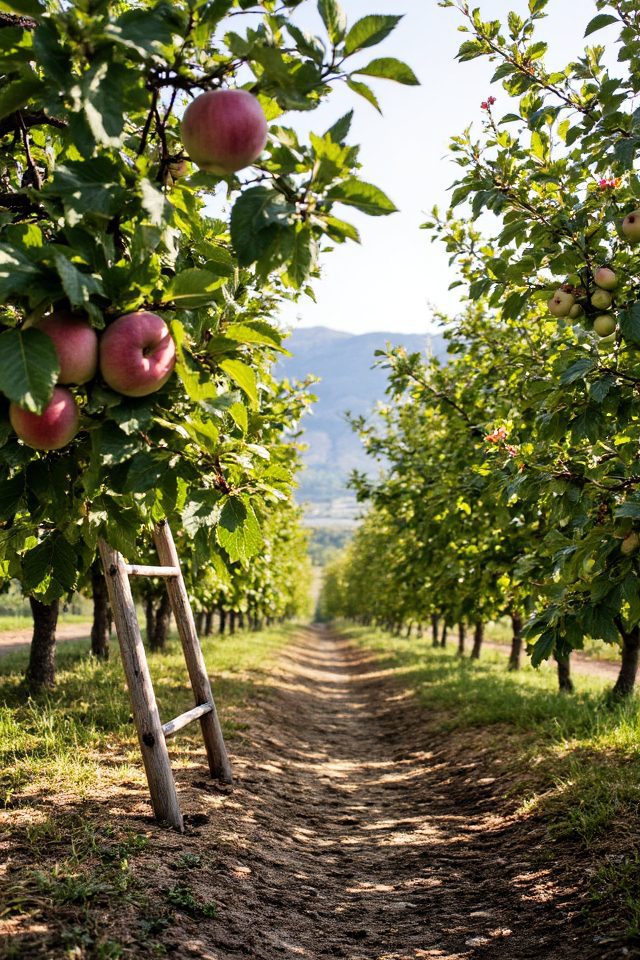
When planning your apple tree layout, consider seasonal harvesting to guarantee a successful yield.
Choose varieties that mature at different times to extend the harvest season, allowing for fresh apples from late summer through fall.
Allocate space strategically, keeping in mind sunlight and soil drainage, as well as bees and other pollinators that will assist with fruit set.
Grouping trees by harvest time can also streamline your picking process, making the overall experience more enjoyable.
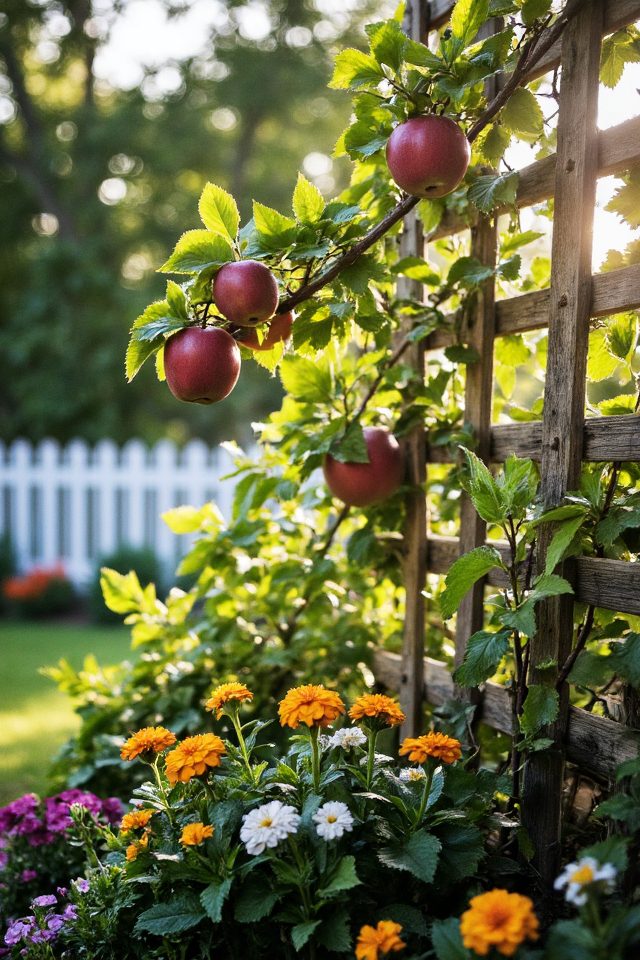
Espalier techniques involve training apple trees to grow flat against a support structure, maximizing vertical space in your garden while enhancing aesthetics.
This method allows you to create a stunning wall of apples, perfect for small areas or urban gardens. By securing branches horizontally along a trellis or fence, you not only increase sunlight exposure and air circulation but also make harvesting easier.
Espaliered apple trees can become a striking focal point in your landscape, offering both beauty and productivity.
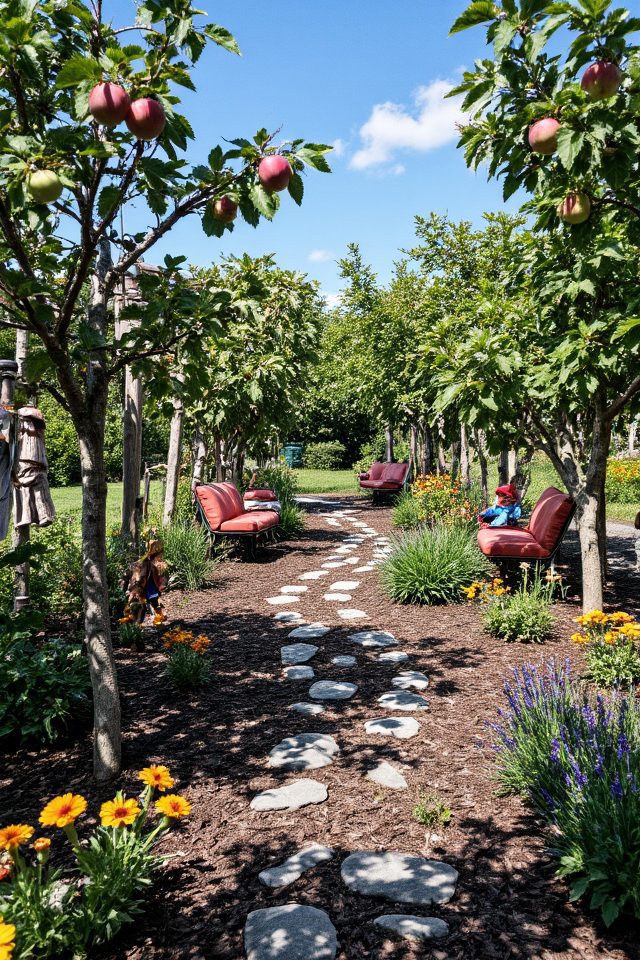
Designing a themed apple garden can transform your outdoor space into a fragrant and visually appealing oasis.
Consider incorporating elements like rustic wooden trellises, colorful garden benches, and whimsical decor inspired by apples.
Create distinct sections featuring various apple tree varieties, along with companion plants like thyme and marigolds that enhance both aesthetics and biodiversity.
Adding pathways lined with mulch or stones will invite exploration, while integrating seasonal decorations can keep the theme fresh throughout the year.
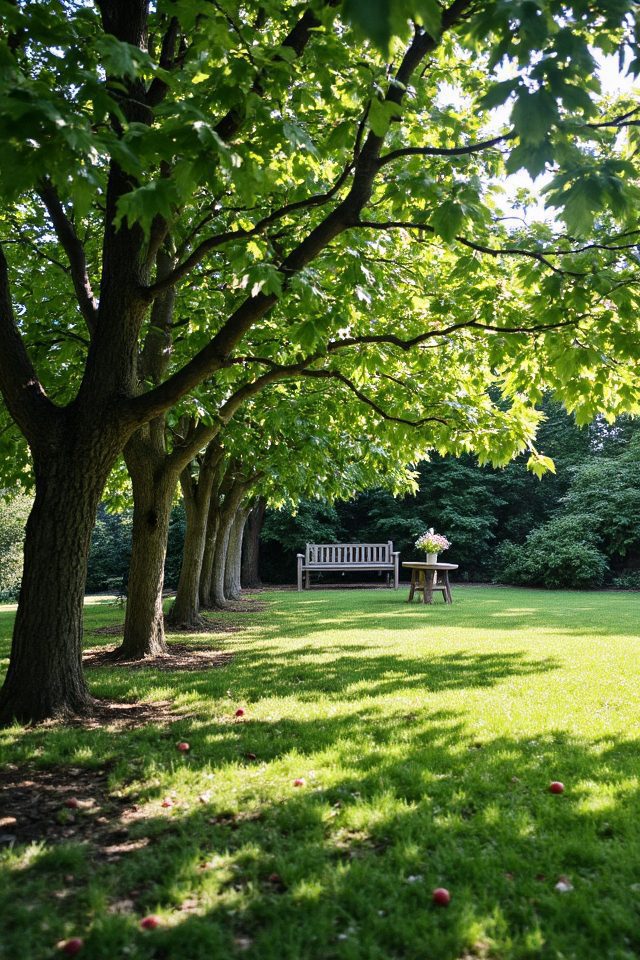
Using apple trees as privacy screens is a creative and beautiful way to enhance your outdoor space.
These trees can grow tall and dense, providing a natural barrier that not only shields your garden from prying eyes but also adds a lush aesthetic. By choosing dwarf or semi-dwarf varieties, you can create a manageable hedge-like effect.
In addition to their practical benefits, apple trees bloom in spring and bear fruit in summer, offering both beauty and bounty throughout the seasons.
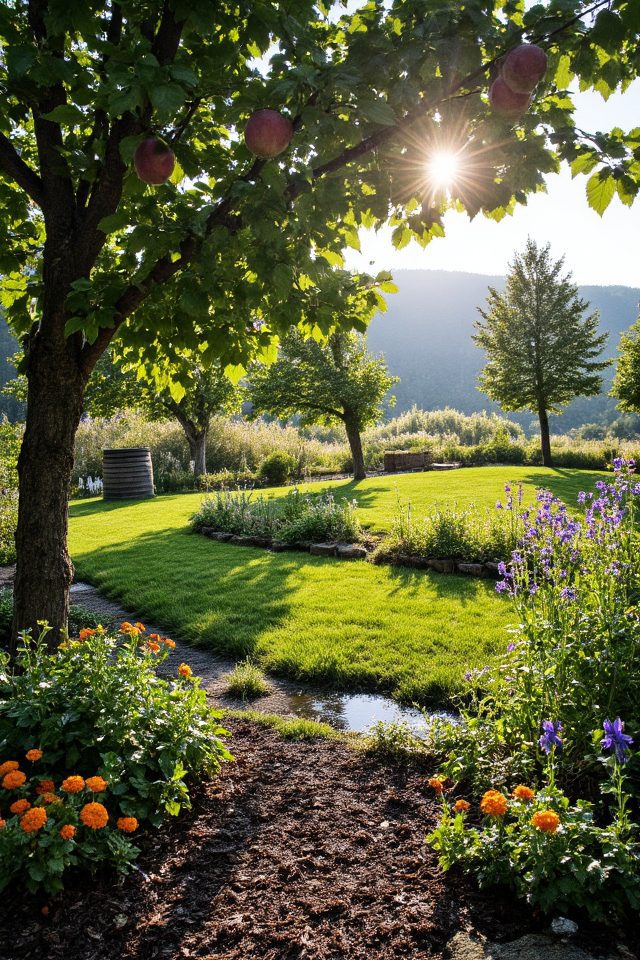
Permaculture principles focus on creating sustainable and self-sufficient ecosystems, making them ideal for an apple tree garden.
By incorporating companion planting, such as planting herbs and flowers that attract beneficial insects, you can enhance the health of your apple trees.
Utilizing techniques like mulching and natural pest control promotes soil health and minimizes chemical use.
Additionally, designing your garden layout to maximize sunlight and water efficiency guarantees a productive, thriving environment for your apple trees to flourish.
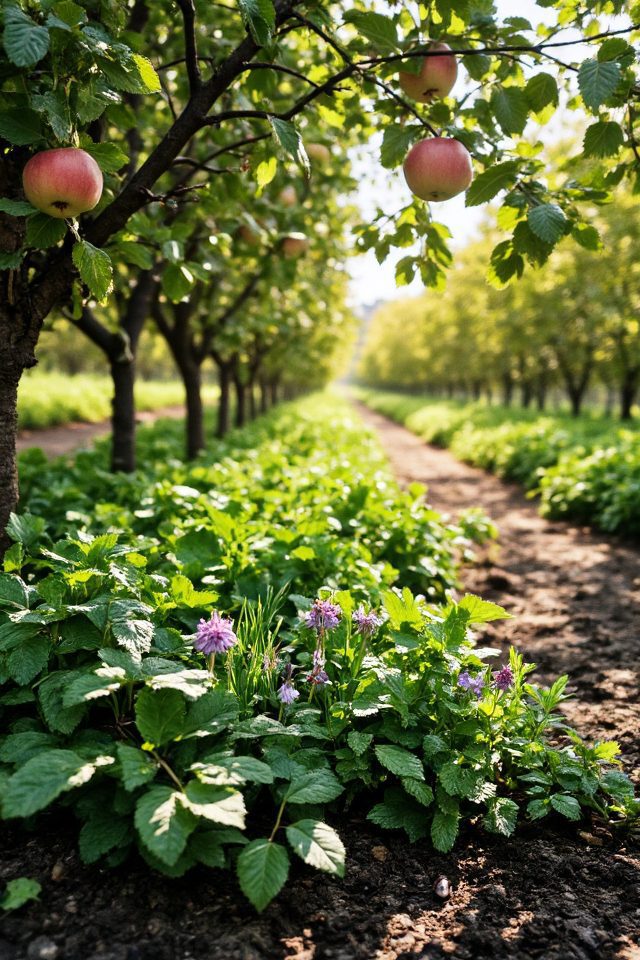
Companion planting with herbs can markedly benefit apple trees by enhancing their growth and health.
Herbs such as basil, chives, and mint deter pests while attracting beneficial insects, promoting a balanced ecosystem around the trees.
Additionally, these herbs can improve soil health and provide nutrients through their root systems.
Planting them strategically around apple trees not only optimizes space but also creates a vibrant and productive garden ecosystem.
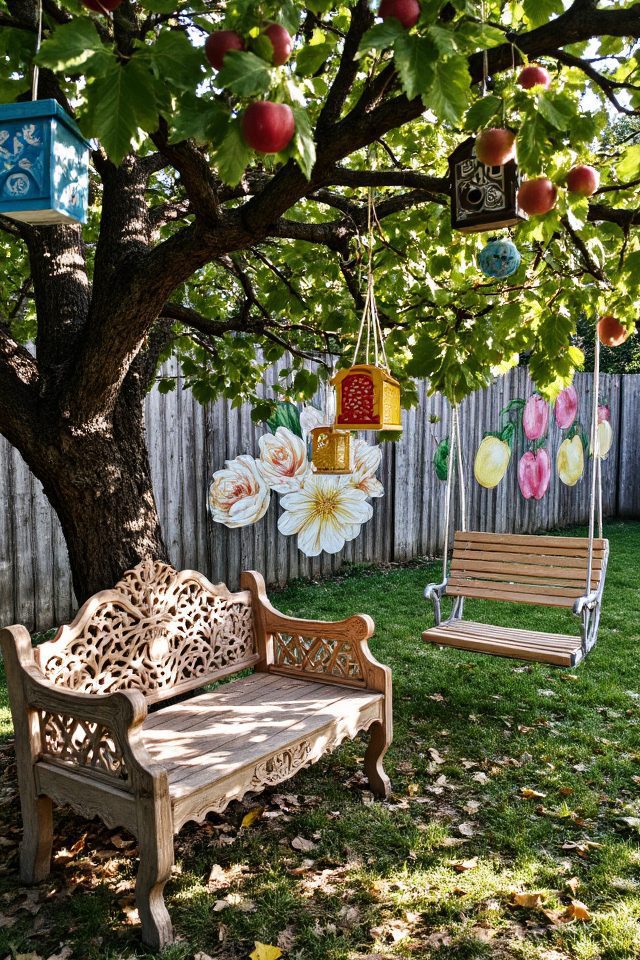
Incorporating apple trees into your garden art can create a charming and whimsical atmosphere. Consider hanging decorative birdhouses or colorful wind chimes from their branches to add a lively touch.
Frame the tree with rustic wooden benches or swing seats where visitors can relax and enjoy the view. You can also paint vibrant murals on tree trunks or surrounding fences, depicting apple blossoms and fruits, integrating nature and artistry harmoniously.
These elements not only enhance the aesthetics but also celebrate the beauty of apple trees.
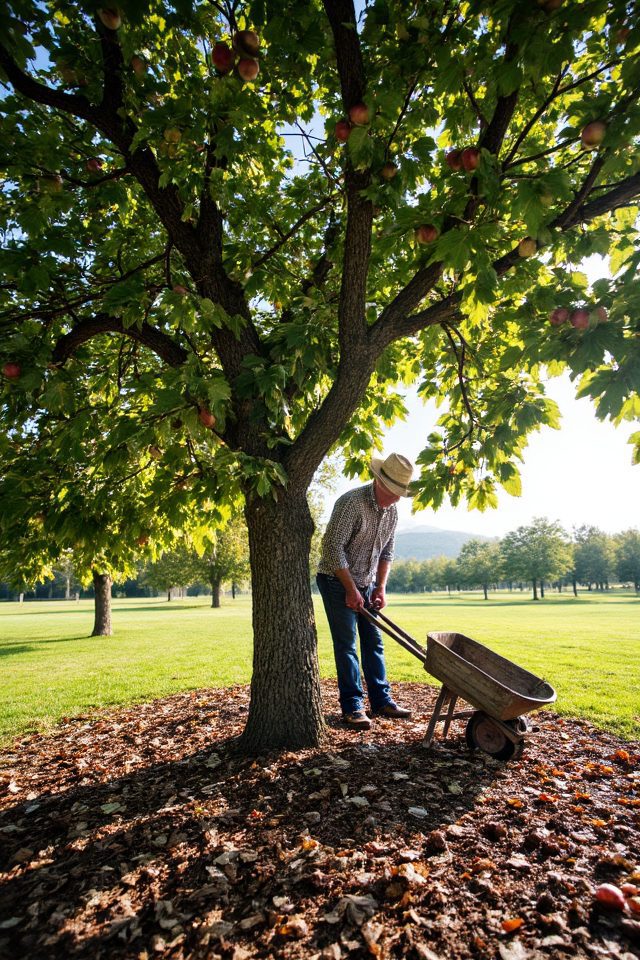
Seasonal maintenance for apple trees is essential to guarantee healthy growth and fruitful yields.
In spring, focus on pruning, removing dead or diseased branches, and applying a balanced fertilizer.
During summer, monitor for pests and diseases, providing necessary treatments.
In fall, clear fallen leaves to prevent fungal infections and mulch around the base for insulation.
Winter maintenance includes protecting young trees from harsh weather and planning for upcoming pruning in spring.
Regular attention throughout the seasons will enhance the tree’s vigor.
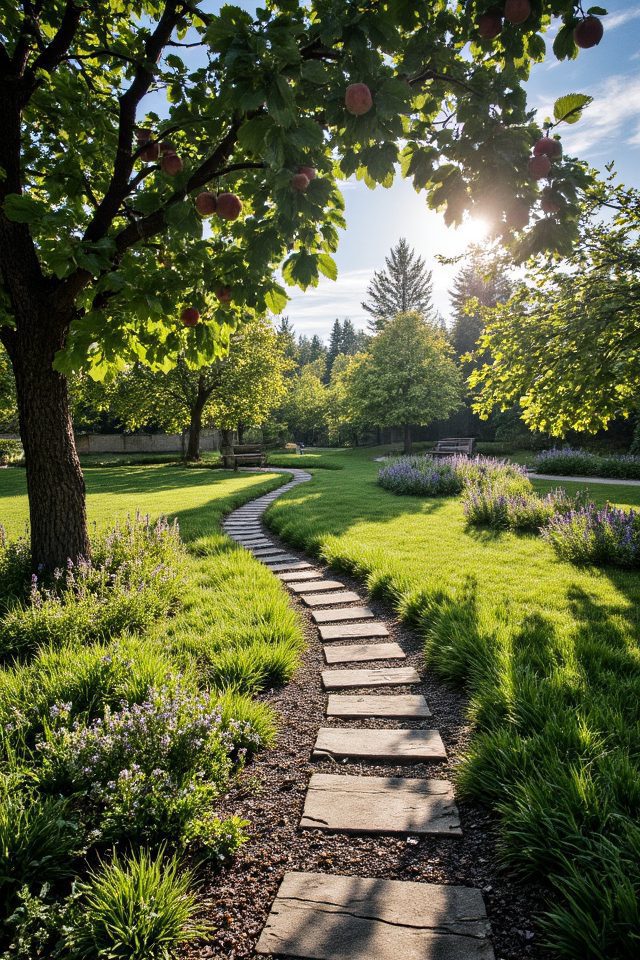
Designing an apple tree garden pathway involves creating a charming, inviting route that enhances the beauty of your apple trees.
Consider using natural materials like flagstone, gravel, or wood chips to outline the path, ensuring it complements the lush greenery of the trees.
Border the pathway with low-growing plants or herbs for added visual interest.
Curves and gentle bends can create a more organic feel, encouraging exploration and offering picturesque views of your apple trees as they flourish throughout the seasons.
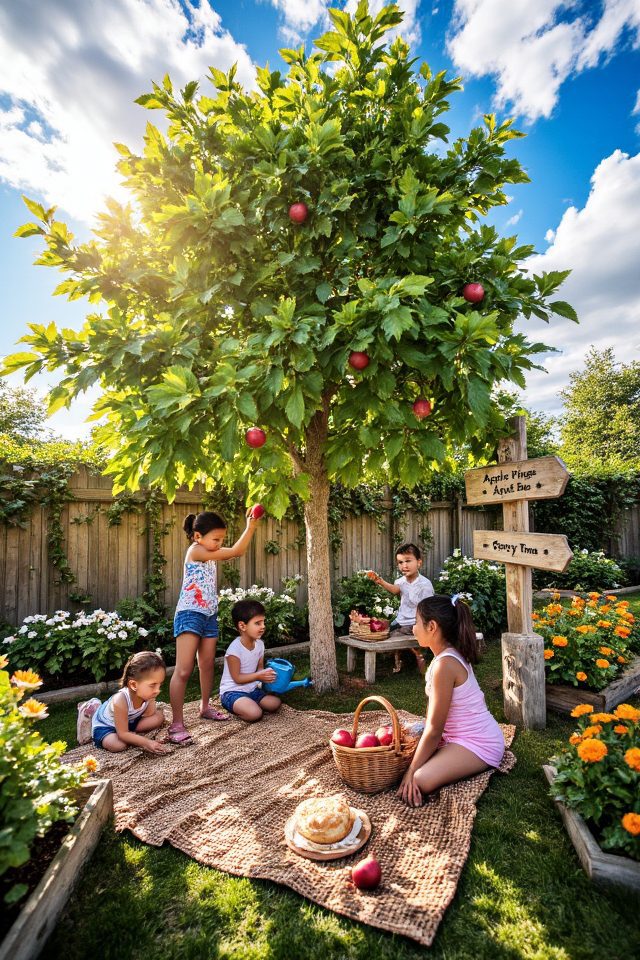
Incorporating apple trees into a children’s garden can create a magical and educational space for kids to explore. These trees not only provide delicious fruit but also serve as a hands-on learning experience about nature and gardening.
Encourage children to participate in planting, watering, and caring for the tree, fostering a sense of responsibility. Adding fun elements like a small picnic area under the tree can make it a cherished spot for family gatherings and outdoor play.
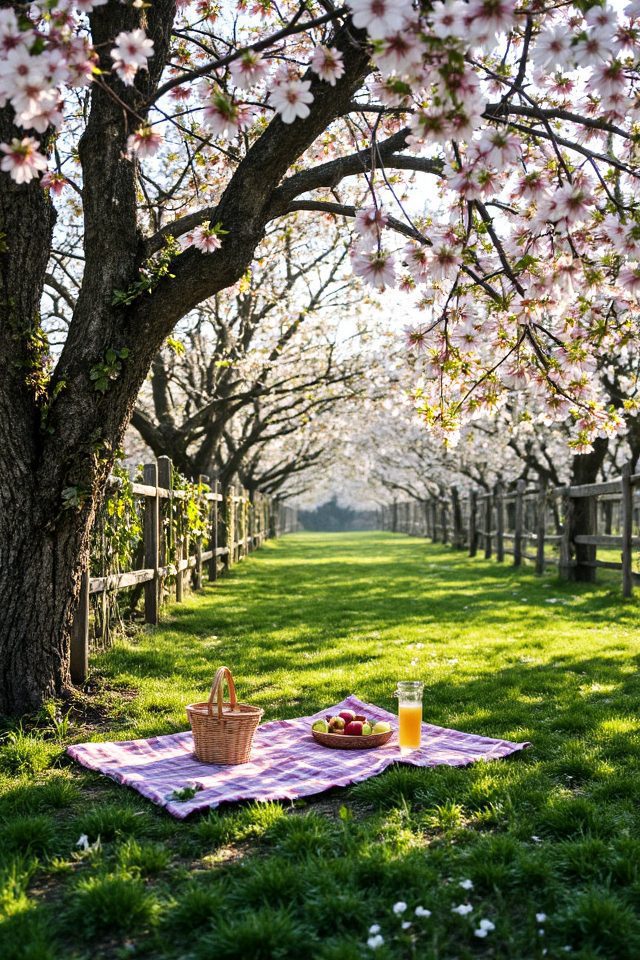
Creating seasonal displays with apple trees can transform your garden into a vibrant showcase throughout the year.
During spring, the delicate blossoms create a stunning backdrop, while summer brings lush green leaves and the promise of juicy fruit.
In autumn, the boughs are heavy with colorful apples, ideal for festive decorations.
As winter approaches, the bare branches can be adorned with holiday lights or ornaments, ensuring your garden remains enchanting even in the cold months.
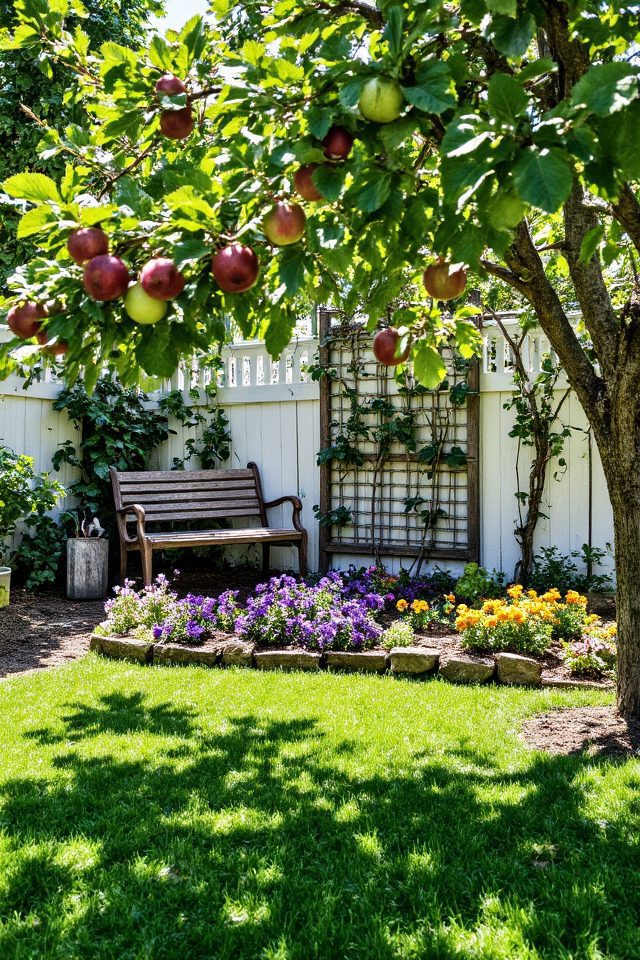
When it comes to small gardens, choosing the right apple tree variety is essential for maximizing space while still enjoying delicious fruit.
Dwarf apple trees, such as ‘Honeycrisp’ and ‘Fuji,’ are excellent choices as they reach a manageable height of 4 to 8 feet.
Alternatively, consider semi-dwarf varieties like ‘Granny Smith’ or ‘Gala,’ which typically grow to 10-15 feet but can still fit well in compact gardens.
These varieties not only provide a bountiful harvest but also add beauty to your landscape.
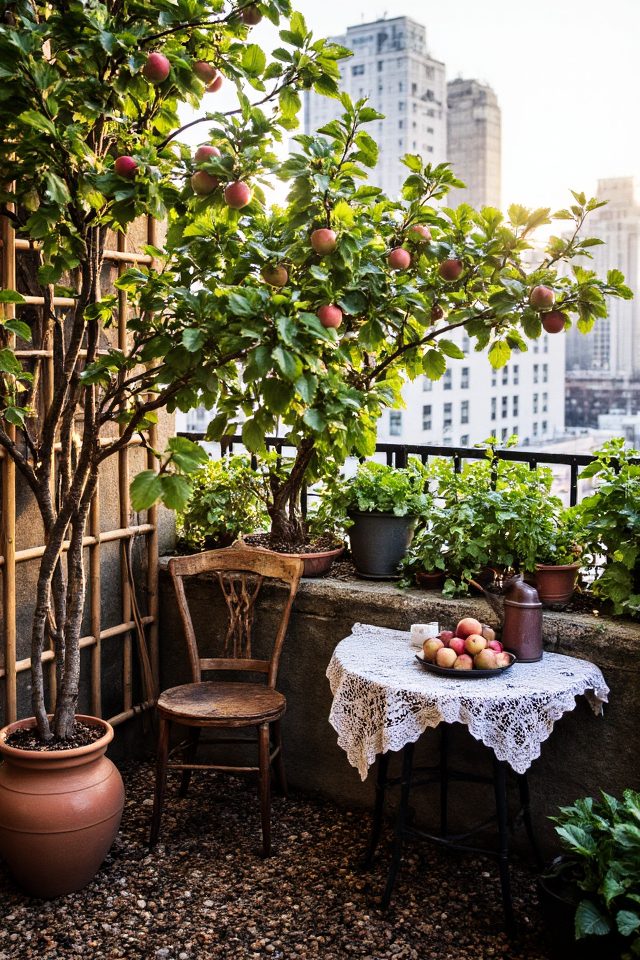
Growing apple trees in urban environments presents unique challenges and opportunities.
With limited space, choosing dwarf or semi-dwarf apple varieties can be ideal for small gardens or balconies.
Utilizing vertical gardening techniques, such as espalier, allows these trees to thrive in confined areas while optimizing sunlight exposure.
Additionally, selecting containers with good drainage and ensuring proper soil quality will help urban gardeners enjoy fruitful harvests, transforming concrete jungles into vibrant green spaces.
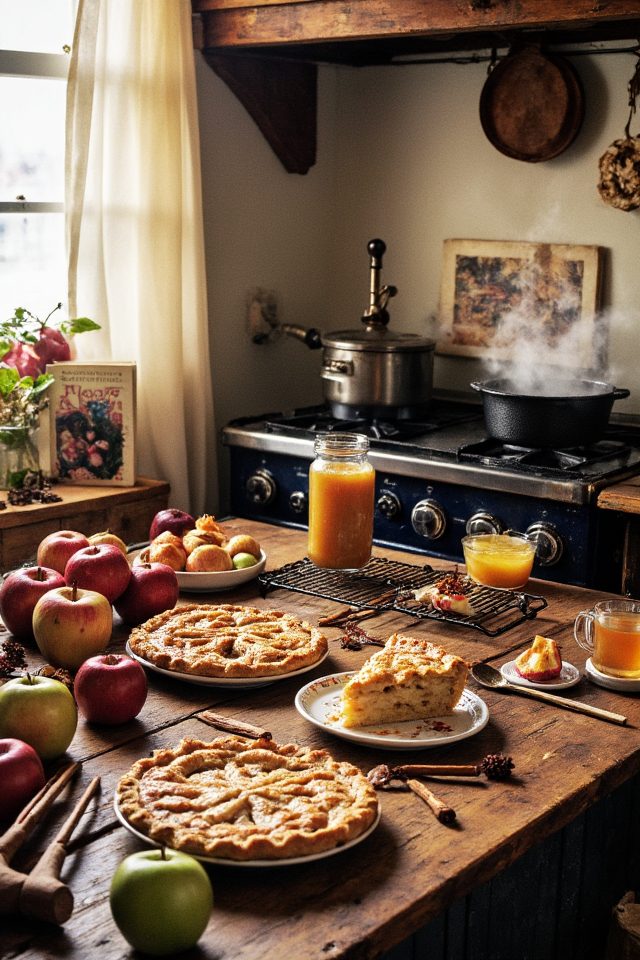
Crafting homemade apple products from your orchard is a delightful way to celebrate the fruits of your labor.
From sweet applesauce and flavorful apple butter to tangy cider and decadent pies, the possibilities are endless.
Utilize fresh apples for these recipes, adding spices like cinnamon and nutmeg to enhance the taste.
Engaging in this creative process not only preserves your harvest but also allows for enjoyable seasonal treats to share with friends and family.
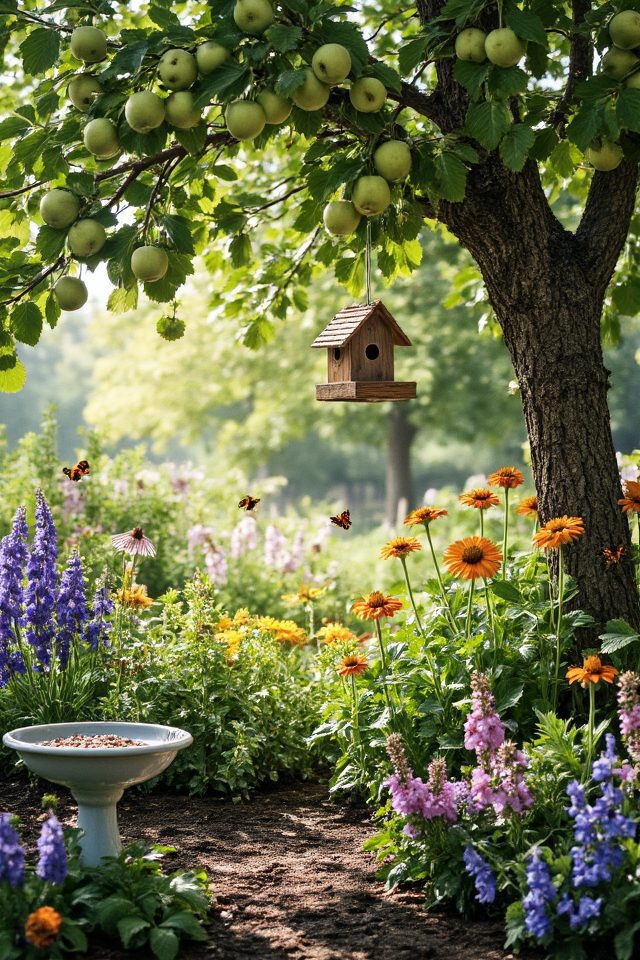
To create a thriving apple tree garden, it’s crucial to attract beneficial wildlife, such as birds and pollinators.
Planting native flowers and shrubs around your apple trees can provide nectar and food sources, encouraging bees and butterflies to visit.
Additionally, incorporating bird feeders, baths, and nesting boxes will invite various birds to help control pests.
By planting apple trees in September, you’re setting the stage for a fruitful garden that thrives year after year. Choose the right varieties for your climate and consider vertical gardening techniques like espalier to maximize space. Enhance your garden’s ecosystem by incorporating companion plants that encourage pollinators and deter pests. With thoughtful planning and seasonal maintenance, you’ll create an inviting apple orchard that not only beautifies your space but also supports wildlife and provides delicious homegrown produce.

Don't let aphids, slugs, and caterpillars ruin another plant. Take back control with simple, natural methods that actually work.